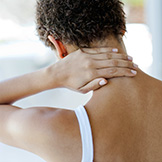
Whether you’re a fitness buff or a couch potato, a teenager or a senior, even everyday activities can put you at risk for bone, muscle or joint-related injury. The good news: there is much you can do to prevent orthopedic injuries so you can stay fit and active throughout life.
It’s a lot more effective to prevent orthopedic problems than having to fix them once they occur with surgeries and long-term medications.
Being overweight and smoking are both hard on your body and put you at greater risk for injury.
Here are other simple guidelines:
Recommended Guidelines
Build Your Core Muscles
If your core muscles are weak, you are far more prone to injuries from overuse or even simple activities like bending and lifting.
Most people think of the core as just the “six pack” abdominal area. But your body’s core is made up of all those muscles from the diaphragm to the pelvic floor and buttocks, from front to back and all the way around your torso. All of these core muscles support your spine, hips and other musculoskeletal structures.
Sam Park, PT, CSCS, physical therapist, explains: “And these muscles work together as a team.” He uses the analogy of a tent: “When one side is floppy, the whole tent breaks down. When a muscle is injured, it fails to fire accurately. That can start a cascade of other issues and it becomes a vicious cycle of more complex problems.”
Make Posture Perfect
Whatever you’re doing, from jogging to sitting at your computer, it’s important that the natural curves of the upper, middle and lower spine are well aligned. “This is called ‘neutral spine’ and it’s the safest, strongest position for your back,” Park says.
Mom Was Right: Drink Your Milk
It’s definitely possible to prevent osteoporosis-related fractures by building and maintaining bone density. This is especially important for women, because declining estrogen speeds up the loss of bone mass.
Because we reach peak bone density in our teens or early 20s, it’s important to build strong bones while still young – and then maintain bone density throughout our life – through adequate calcium and vitamin D intake and weight-bearing exercise. If you are approaching menopause or are post-menopausal, it’s important to talk with your primary care doctor about how to reduce your risk of osteoporosis.
The Right Moves
“When I’m at the gym, I always notice people using equipment or exercising incorrectly. I think to myself, we’re going to be seeing you in physical therapy down the road,” Park says. “Proper technique and good body mechanics are really important. Ask for advice from the gym staff before you’re feeling pain.”
It’s also important to know your body and listen to what it’s telling you. If you feel pain when you’re working out, stop or switch to a pain-free activity. Be as physically active as you can tolerate, but respect your body’s age and condition. Choose activities that won’t further stress an already weak area, or build strength in that area slowly with appropriate exercise.
Mix it Up
Vary your workout routine to gain maximum physical benefit and avoid overuse injury. Include a good balance of cardiovascular exercise, strength and core training, weight-bearing activities, and activities to improve flexibility and balance such as t’ai chi or yoga.
Everything in Moderation
Don’t jump into a new sport or amp up your fitness routine overnight. Begin slowly, and build up the duration and intensity in a gradual progression. Always warm up, stretch and cool down. Give your body a rest several days a week.
Be sure to talk with your doctor before beginning any fitness activities if you have had previous orthopedic procedures or have a chronic condition such as arthritis, heart or pulmonary disease. If you need a doctor, visit our online physician directory.
For More Information
- Try this basic strength-building exercise:For this exercise, bring one knee up and then return. Do this for both legs. Keep your pelvis still – do not let it rock backward or forward.